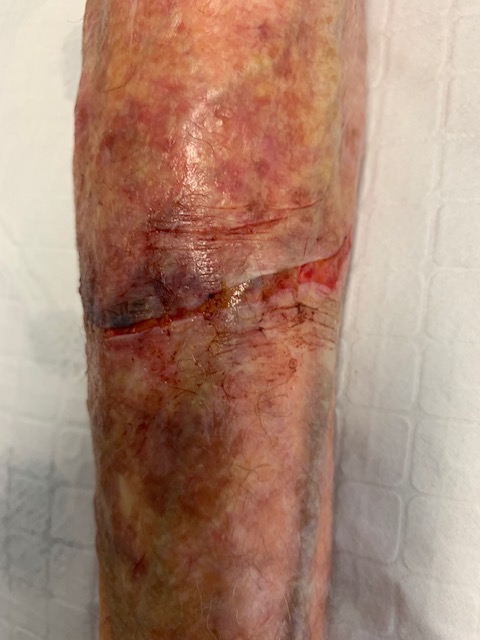Pre-tibial skin injury and lower limb oedema
Health professionals regularly care for people who experience shin injuries and observe that the affected limb is often swollen after the trauma. Recent work mapping the lower limb lymphatic pathways has demonstrated that the anterolateral lymph vessels proceed from the lateral ankle and progress across the shin (pre-tibial) region. If haematomas, lacerations or skin tears occur within the pre-tibial region then lymphatic vessel damage eventuates, which disrupts lymph drainage and results in tissue fluid building up around and below the wound. Dressings alone are regularly insufficient to repair these wounds and require the addition of lower limb compression to promote lymph drainage. Once swelling is minimised, wound repair is much more likely to take place.
[It should be noted that there are many reasons for lower limb swelling. The above comment refers to trauma induced oedema. All individuals with a swollen limb(s) should have a diagnosis as to why this presentation exists.]
Reference: Shinaoka,A et al Lower-limb lymphatic drainage pathways and lymph nodes: a CT lymphangiography cadaver study. Radiology 2020;294:223-229



